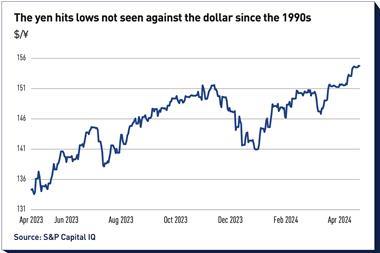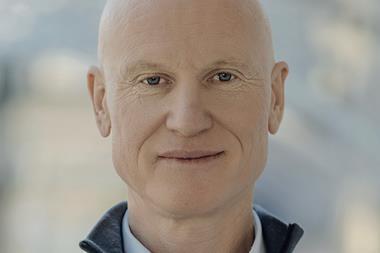Change in Italy is natural. As Dante famously wrote in the Divine Comedy: “The customs and fashions of men change like leaves on the bough, some of which go and others come.”
Unless, that is, you’re talking about Italian pension reform. Few Italian governments over the years have strayed near pensions and those who did rarely stayed the course.
As such, it’s easy to forget that the first Italian industry-wide pension fund, Fonchim, only started in 1999.
On that back of that singular reform, however, the Italian supplementary pensions industry has been growing - not spectacularly, but certainly steadily.
Figures released by the Italian pensions association Mefop in September last year showed that the country’s closed-end funds had breached the 1m membership mark in 44 different funds – representing some e3bn in assets.
Their counterpart open-end funds, available to those not covered by closed-end arrangements (for the most part the liberal professions and the self-employed) had a membership around the 320,000 mark with just over e1bn in assets. In turn, the country’s pre-existing pension funds, known as foundations, which cover the banking sector and certain professional groups had just short of 700,000 members, but with almost e31bn in assets.
And from their conservative investment beginnings, Italy’s closed-end funds are now moving on. Recent shifts by three Italian industry schemes from monocomparto retirement arrangements (a single investment option for all employees) to become multicomparto plans (generally three investment options for employees) have been heralded as a potential liberaliser of the market.
But, as with much in Italian pensions, there is little suggestion that this revolution will occur overnight.
Alessandro d’Andrea di Pescopagano, director general at AXA Investment Managers Italia, explains: “These funds are now introducing the multicomparto option with a higher equity portion, although most people decided to remain in the former monocomparto fund.
“It’s strange that in other situations in Italy people are very ready to take risks, for example in their mutual fund arrangements where it is not unusual to see money going into emerging market debt. In fact, there has been a boom in the mutual fund market in the past seven or eight years – particularly in equities.
“It’s very different, however, for retirement saving. The problem of pensions saving is less well perceived and not many people now know that they will only retire with a state pension of around 50% of their salary. They believe the levels are still at 75–80% of earnings.”
Massimo Greco, head of asset management at JP Morgan Fleming in Milan, also adds a word of warning to the prospects for the multicomparto environment: “Multicomparto is a serious proposition and will make things a lot easier, but for retirement in Italy people tend to put most of their money in the most conservative option available. Italians want pensions money to be safe.
“For example, those funds that have transferred to multicomparto have seen something like 80% of the money going into money market funds – what’s the value of that? It doesn’t really fulfil its objectives!”
Italian pension funds took more than their fair share of criticism from abroad when they first announced their initial ‘equity-lite’ investment strategies and their preference for local managers. Today, some domestic fund managers sense an opportunity to even the score.
At the time the bull market was still raging, but with hindsight it was reaching its nadir – a case perhaps of both unfortunate timing for the birth of mainstream Italian second pillar pensions, but good fortune that the equity brio of the period hadn’t rubbed off on them.
As Monica Basso, responsible for pension fund business at Pioneer Investments, points out: “I remember that foreign asset managers criticised the board of directors at Fonchim because they chose a conservative investment profile – 70% in bonds and 30% in equities.
“ Now we can say that those pension funds were right due to the poor state of the markets. They have been able to offer reasonable added value to their members.”
Alessandro Gandolfi, responsible for pension funds at Sanpaolo IMI Institutional Asset Management adds his view that criticisms of Italy as a ‘closed market’ were wide of the mark: “I think what happened was very typical of a start-up market. It will open up over time, sure, but I think it would have been surprising to see a broader asset allocation within Italian pension funds at the time – particularly when you consider the board make-up of Italian funds and the kinds of equity levels that some asset managers were proposing to them!”
Understandably, given today’s bear market, Italian investment allocations are still on average rather low compared to the more developed funded pensions markets in Europe. A benchmark of around 20% equity, 80% fixed-income is as good as the rule amongst Italian industry plans.
And while Italian schemes may not have unduly suffered in the prolonged equity slide, conditions have not helped convince the Italian public that the funded pension route is any kind of salvation, particularly when they compare their returns over the last few years with the guaranteed annual payment they receive from their TFR allocations.
This impasse is one that governments in Italy have been trying to grapple with for some years. The TFR (trattamento di fine rapporto) was originally an accrual for retirement as an addition to IMPS (state pension), but latterly became regarded by employees as an indemnity fund for use in the event of redundancy. At present the TFR accrual stays inside the company of employment. The idea of the government, however, is to divert this payment into pension funds.
Opposition to the government plans has come from all sides – from employees reluctant to give up a guaranteed unemployment/retirement pot, but also from corporations who have in the past seen the TFR as part of cash flow.
Throw into the mix the fact that TFR guarantees 75% of inflation plus 1.5% on an annual basis for employees – a return of 3.5% of in 2002 – and it’s not hard to see why Italians are not currently enamoured with the transfer idea – particularly as they already pay on average around 33% of salary for first pillar pensions and a further 7% into the TFR.
Consequently the Italian government is trying to box clever by sidestepping resistance to compulsory TFR transfers and pushing through legislation for what is being dubbed the “silent” TFR. Under the proposals if a worker doesn’t make specific instructions to retain his or her TFR payment in its present form then it will be transferred for them to a closed or open-ended fund.
The legislation is due to be brought before the Italian parliament this summer.
Says Roberto Calchi at BNP Paribas Asset Management: “Things are moving quite quickly now and the government seems to be rather sensitive to the criticisms and is working on more fiscal incentives for individual pension saving but also to provide indemnities to companies for the loss of the TFR.
“We certainly expect the market to grow significantly in the future as a result of the transfer of TFR to a funded arrangement.”
Managers in the Italian market agree that the gradual shift to multicomparto along with reform of the TFR should introduce longer-term changes to Italian institutional investment such as the use of passive management and the offer of more structured products.
Greco at JP Morgan believes a greater move to indexation cannot come too soon, albeit for slightly different reasons. “The Italian pensions market has been developing and there is a great deal of potential. The trend towards passive management is one that we applaud even though we don’t do it, because it will bring some clarity to the market.
“Either you are passive and cheap or active and more expensive, whereas before a lot of pension funds didn’t realise the difference and wanted to pay passive fees for active management. Also they were allegedly looking for active managers but putting so many restraints on what they could do that passive mandates would have been much better for them.”
Calchi at Paribas believes that a shift to passive could eventually lead to a wholesale core/satellite approach, but one where the satellites are less likely to be hedge funds than high alpha equity mandates.
While it is clearly premature to call time on the balanced mandate in Italy - remaining as it does the mainstay for the monocomparto funds – the move to multicomparto arrangements would suggest the arrival of more specialist managers on the scene and a general broadening of the market.
Carlo Benetti, executive director for institutional clients at ING Investment Management, believes the move to specialisation is also being pushed by a former low-key participant in Italy – the investment consultant.
To date Italy’s closed-end funds tended to have an adviser on the board who would act as the consultant.
Says Benetti: “There are now companies in this area such as Prometeia in Bologna who are creating a framework for asset allocation and manager selection. They may be focused more on the banking foundations for the time being but they are entering the pension fund market alongside the individual advisors who work in this area.
“I also don’t believe it will be long before the market sees the arrival of the large global consultants in the investment arena.”
Calchi at BNP Paribas believes that the introduction of inflation-linked products could also suit the move to multicomparto plans by offering some kind of capital protected options for risk-averse employees. However, he says he has yet to see the country’s closed-end funds moving to passive management, although he notes that there is increased interest in the market for this type of product.
The foundations, which are much freer in terms of investment regulation and as a result more dynamic in allocation than their socially driven counterparts, have also been diversifying into hedge funds – an area where the closed funds are not yet permitted by law.
Gandolfi at Sanpaolo IMI believes this situation will change in time for the pension funds, particularly with the advent of more consultants: “I believe that we need to have different approaches to offer to pension funds, such as uncorrelated managers and I believe this will happen with the developing market for independent advisors.”
Benetti at ING notes that another debate taking place in Italy at present is the role of benchmarking - a function of three years of bad investment performance.
“The question is whether pension funds should be looking for absolute returns and some are looking at this carefully now. My feeling though is that when the market rebounds, pension funds will go back to a relative benchmark system and not one of total returns. It is an interesting point for discussion at the moment in financial literature in Italy.”
Nonetheless, the psychological impact of the market slide has meant that investors seem to have put equities on hold and are rowing back to the perceived safe haven of Italian bonds and money market funds.
Basso at Pioneer says Italian pension funds had a focus on European government bonds, but that this has presently shifted to shorter duration instruments or cash.
“If they look at all at corporate bonds they tend to be very careful on ratings and don’t go any lower than AA. It’s difficult for them to extend the credit risk any further.”
However, Chris Walker, head of institutional business at Scottish Widows Investment Partnership (SWIP), which last year signed a partnership deal with Italian investment bank, Cofiri, believes the liberalisation of the Italian market is still bubbling away underneath the current market concerns:”Since we signed the deal we have won three institutional pension clients mainly for pan-European bonds although going forwards we are anticipating global equities and pan European equities as the areas of growth.
“The main trends I see are increased interest in equities over bonds, the growth of pension funds and greater interest in foreign fund managers, but superimposed on that we have the bear market conditions at present and people are worried about leaving bonds.”
Walker says the firm also recently did its first pitch for an SRI mandate in Italy, which he believes is a sign of money to come in that domain.
Despite the current downturn then, foreign investment managers are sounding positive on Italy again, although not all believe it has turned the corner yet.
Greco at JP Morgan, which currently focuses on the retail market in Italy, believes that in general the Italian institutional market in Italy has been disappointing for foreign managers for a variety of reasons: “The mandates are small, fees are low and it is a complex market in terms of operating set-up, which typically is not good for asset managers.
“We see no reason why we should be doing business at a level that we would not accept in any other country.
Certainly the largest closed-end pension funds entered the market with low fee demands, courting asset managers, both domestic and foreign who desperately wanted a foothold in the institutional arena and were prepared to slash their rates to get in.
Rumours fly around amongst managers in Italy that some firms were quoting as low as 10 basis points for the management of equity portfolios.
The flip side is that new pension funds could be justified in asking why they should pay any more than older schemes like Fonchim or Cometa.
Calchi at BNP Paribas believes the only way foreign managers can compete is to stand their ground on product quality and price: “We are severe on risk control, cost and process and we have to prepare a list of costs that we have to sustain. The fee approach is very structured and very Anglo Saxon.”
However, he concedes that the approach is not an easy one to sell in the Italian market due to increasing sensitivity amongst pension funds regarding cost reduction.
“We make a lot of shortlists, but in 80% of cases we are rejected because of the fee structure.”
He also believes that a strong Italian-speaking presence on the ground is vital: “With pension funds and foundations they quite rarely speak English, so you have to have an Italian team.” Such an approach requires significant investment though and a knowledge that business can be won.
To this end, Di Pescopagano at AXA, opines that a competitive factor in the past for the local banks was their ability to cross-sell services to pension plans, an advantage he believes may now be unravelling: “We have the impression now that the market is flat that there could be some problems for those that took this approach because they didn’t really have much sensibility over cost issues.
“We don’t believe that they can sustain low margins for a long time. In the medium to long term we think that they will be forced to propose something different to the market in line with what the foreign managers are offering.”
Basso at Pioneer, however, argues that some foreign competitors overlooked the extent to which the Italian market could be difficult in terms of legislation, necessary links with custodians and administrators, as well as the level of management fees. However, she also agrees that the Italian asset management arena is undergoing a period of change: “We are now in a situation where the market is becoming more concentrated. Some players are not approaching the pension fund sector of the market, others are restructuring and are not so aggressive at the moment.
“My perception is that we are moving from a low fee environment to another situation in which there will only be four or five big competitors, perhaps both Italian and foreign players, with higher management fees, higher skills and more professionalism.”
To back up her argument, she notes that GIPS compliance for managers has now become mainstream investment practice.
“When we first went down the GIPS road it was an awkward thing because we had to compete with other managers who were not GIPS compliant and there was a lot of cherry picking happening in the market.
“Now pension fund boards are much more aware of this and in every beauty parade they are asking for GIPS standards.”
Walker at SWIP enjoins that the Italian market has stabilised and that clients are prepared to pay for high quality products. “I am bullish on Italy. Compared to Spain and France I think Italy is moving fast and they are proving themselves more flexible. I’d place it among the most attractive developing European markets.”












No comments yet